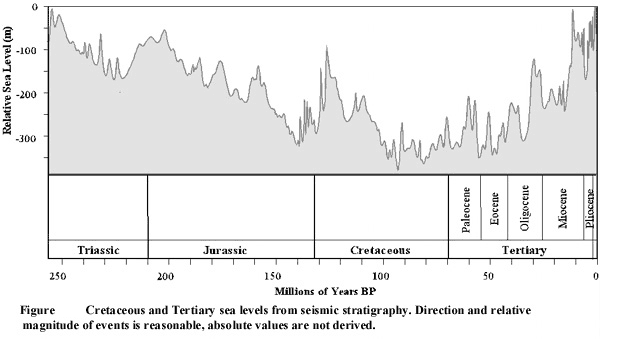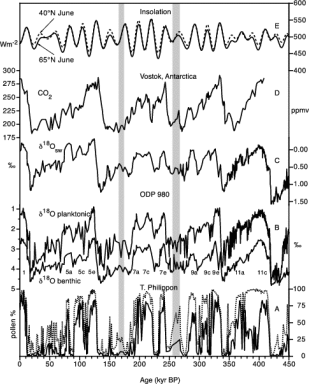- Jun 18, 2006
- 3,851,162
- 51,516
- Country
- United States
- Faith
- Baptist
- Marital Status
- Married
- Politics
- US-Republican
Using their principle that "the present is the key to the past," evolutionists claim that there is evidence for earlier ice ages. However, supposed similiarities between the rocks in those geological systems and the special features produced in the Ice Age are not consistent.
Today, glaciers grind up the rock they travel over, creating deposits of fine and coarse material mixed together. This unsorted material is known as till, or tillite when it becomes bound together to form a rock unit. The grinding action of rocks embedded in the glacier also scores parallel grooves in the bedrock the glacier slides over - these grooves are called striations. When some melting occurs in summer, the glacier releases rock "flour" which is washed into glacial lakes and settles to form fine and coarse alternating layers known as varves. Sometimes a piece of ice will break off the glacier or ice sheet and float into such a glacial lake, dropping embedded boulders as it melts. These "dropstones" fall into the fine sediments (varves) on the lake floor, so that stones are sometimes found in the varves.
Geologists have claimed that these features have been found in ancient rock layers, proving that there had been previous ice ages over geologic time. Many lines of evidence now indicate that the observations have been misinterpreted:
Today, glaciers grind up the rock they travel over, creating deposits of fine and coarse material mixed together. This unsorted material is known as till, or tillite when it becomes bound together to form a rock unit. The grinding action of rocks embedded in the glacier also scores parallel grooves in the bedrock the glacier slides over - these grooves are called striations. When some melting occurs in summer, the glacier releases rock "flour" which is washed into glacial lakes and settles to form fine and coarse alternating layers known as varves. Sometimes a piece of ice will break off the glacier or ice sheet and float into such a glacial lake, dropping embedded boulders as it melts. These "dropstones" fall into the fine sediments (varves) on the lake floor, so that stones are sometimes found in the varves.
Geologists have claimed that these features have been found in ancient rock layers, proving that there had been previous ice ages over geologic time. Many lines of evidence now indicate that the observations have been misinterpreted:
- The "tillites" of lower rock layers are small in area, commonly thick, and probably all of marine origin, whereas those of modern glaciers are relative large in area, thin and continental.
- There are limestones and dolomites frequently associated with these "tillites" - carbonates which form today in warm water, not cold.
- The largest boulders in the ancient "tillites" are much smaller than the larger boulders being deposited by glacial action today.
- Underwater mass flows can produce tillite-like deposits, as well as striated bedrock and striated stones in the "tillite." Such mass flows would be expected during Noah's flood.
- Turbidity currents can deposit varve-like laminated sediments very quickly. These sediments are more accurately called rhythmites. A varve is defined as a rhythmite deposited in one year. Lambert and Hsu have presented evidence from a Swiss lake that such varve-like rhythmites form rapidly by catastrophic, turbid water underflows.


